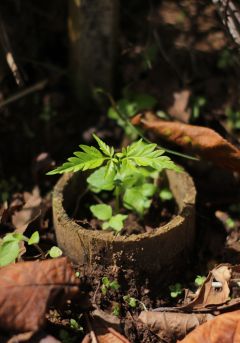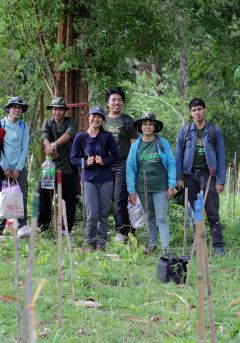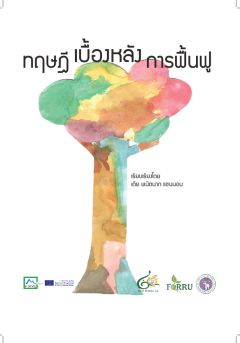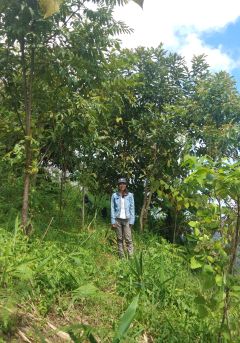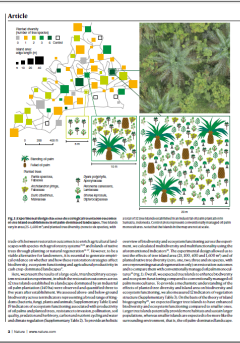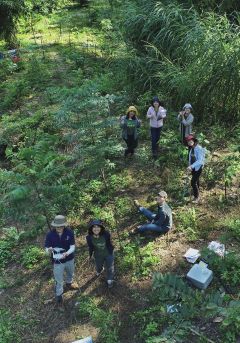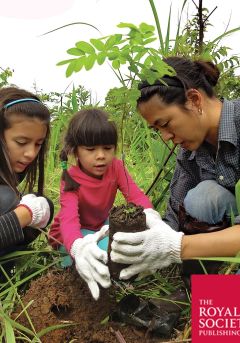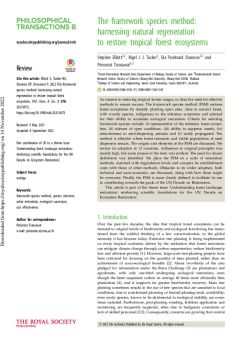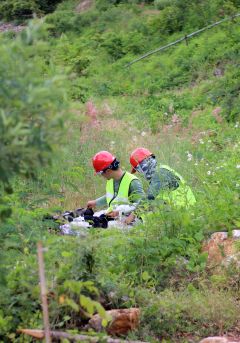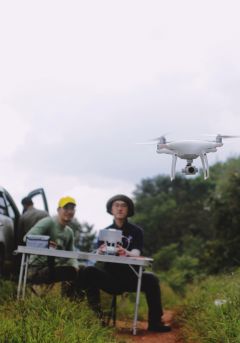Extensive study has been made by FORRU, local forestry staff and students of Wailailak University of the trees of the lowland forest in the remaining range of Gurney’s Pitta in southern Thailand, including the identity of species and their flowering and fruiting phenologies. Over 180 species of tree have been identified and reference and voucher collections made of leaves and seeds. Phenology trails have been established and over 200 trees individually labelled.
Detailed measurements of sapling growth rates have been made in the tree nursery to identify potential framework species for forest restoration, and field visits have established the identity of trees capable of regenerating in deforested areas. Three different forest restoration methods have been trialled and closely monitored at experimental plots; accelerated natural regeneration, replanting with framework species and direct seeding. All three show potential for wider forest restoration. A technical guide to forest restoration methods in the area has been produced.
Moreover, a local school curriculum “Gurney’s Pitta and Nature” was developed mainly by BCST and its partners. The curriculum aims to i) establish systematically basic learning about Gurney’s Pitta, ii) promote this subject at higher levels of education, iii) promote Gurney’s Pitta as a flagship species for conservation and iv) raise awareness of local people on Gurney’s Pitta conservation.
1: Selecting suitable tree species for direct seeding to restore forest ecosystems in northern Thailand
ABSTRACT: To upscale restoration of tropical forest ecosystems, direct seeding—sowing seeds directly into the ground—is potentially more cost-effective than tree planting. However, its success is...
2: Developing Techniques for Direct-seeding for Forest Restoration in Northern Thailand
ABSTRACT: Forest restoration by direct seeding is potentially more cost-effective than tree-planting, especially for upscaling restoration of tropical forest ecosystems. Unfortunately, its success...
3: ทฤษฎีเบื้องหลังการฟื้นฟู
หนังสือเล่มนี้ได้รวบรวมเนื้อหาครอบคลุมถึงการรบกวนที่ส่งผลต่อกระบวนการฟื้นตัวของธรรมชาติ ทำให้มวลชีวภาพลดลงและสภาพดินเปลี่ยนแปลงไป...
4: Differential seed removal, germination and seedling growth as determinants of species suitability for forest restoration by direct seeding – A case study from northern Thailand
ABSTRACT: Direct seeding is potentially a more cost-effective alternative to conventional tree planting for restoring tropical forest ecosystems. However, seed loss, due to removal and damage by...
5: Tree islands enhance biodiversity and functioning in oil palm landscapes
ABSTRACT: In the United Nations Decade on Ecosystem Restoration, large knowledge gaps persist on how to increase biodiversity and ecosystem functioning in cash crop-dominated tropical landscapes....
6: Use of drone RGB imagery to quantify indicator variables of tropical-forest-ecosystem degradation and restoration
ABSTRACT: Recognizing initial degradation levels is essential to planning effective measures to restore tropical forest ecosystems. However, measuring indicators of forest degradation is...
7: Understanding forest landscape restoration: reinforcing scientific foundations for the UN Decade on Ecosystem Restoration
Under the United Nations Decade on Ecosystem Restoration, 2021-2030, there has been no more critical or opportune time to restore forests, which are critical for the world’s species, people and...
8: The framework species method—harnessing natural regeneration to restore tropical forest ecosystems
Abstract: The framework species method (FSM) restores forest ecosystems by densely planting open sites, close to natural forest, with a group of woody species, characteristic of the reference...
9: Use of Unmanned Aerial Vehicle (UAV) Imagery to Monitor Progress of Early Forest Ecosystem Restoration in an Opencast Mine
ABSTRACT: Monitoring forest restoration is essential for improving and advancing restoration techniques, but human-based monitoring is costly as it requires intensive labour in the field. Although...
10: UAV-derived forest degradation assessments for planning and monitoring forest ecosystem restoration: towards a forest degradation index
ABSTRACT: Global initiatives such as the Bonn Challenge and the New York Declaration on Forests have prompted large-scale forest restoration projects to combat land degradation, preserve...

